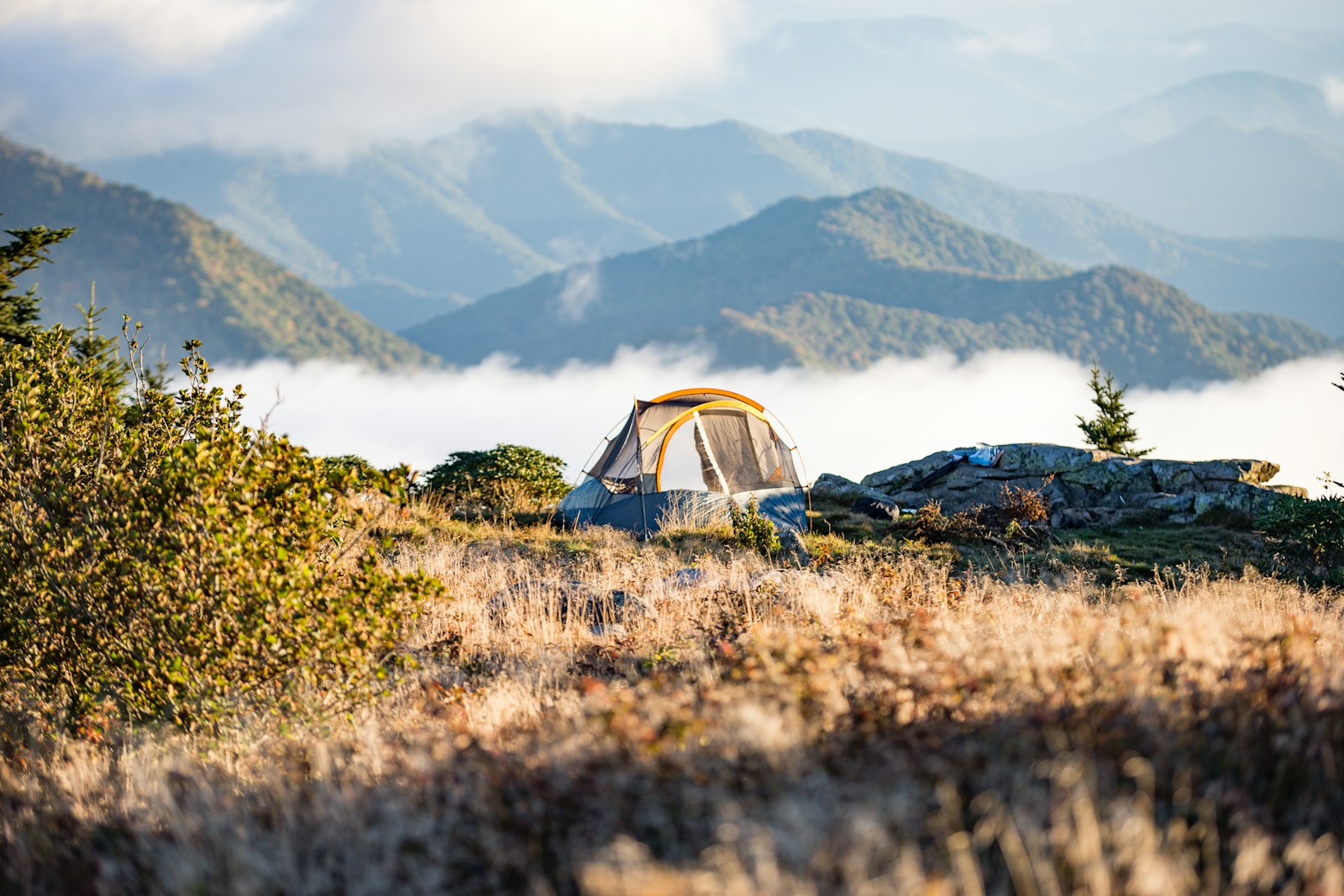There’s something profoundly moving about waking up in a tent with majestic mountain peaks as your first sight of the day. National park campgrounds offer some of the most spectacular mountain vistas in America, combining accessibility with natural splendor that rivals the most exclusive resorts. These camping locations provide not just a place to sleep, but an immersive experience in some of the country’s most breathtaking landscapes. From the jagged peaks of the Rockies to the ancient Appalachians, America’s national parks offer camping opportunities that showcase nature’s grandeur at its finest. The following campgrounds represent the cream of the crop for mountain views, each offering its own unique perspective on America’s stunning topography.
Glacier National Park’s Many Glacier Campground
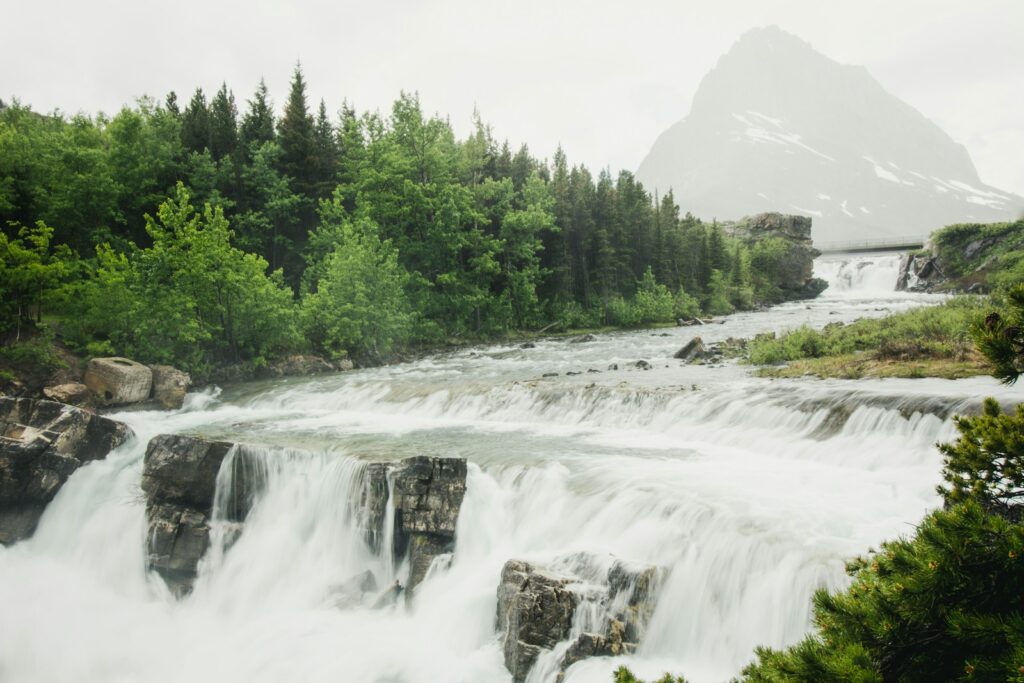
Nestled in the heart of Montana’s Glacier National Park, Many Glacier Campground sits surrounded by some of the most dramatic alpine scenery in North America. The campground offers unobstructed views of Grinnell Point, Mt. Henkel, and the Swiftcurrent Valley, with their knife-edge ridges and glacial cirques creating a panorama that seems almost too perfect to be real. Morning light here bathes the mountains in golden alpenglow, while evening brings the rich purple and pink hues of mountain sunset reflecting off remnant glaciers. Campers frequently report seeing moose wading in Swiftcurrent Lake just steps from their tent sites, adding wildlife viewing to the already impressive mountain experience. The popularity of this campground means reservations are essential during peak summer months, when each of the 109 sites typically fills before noon.
Grand Teton National Park’s Signal Mountain Campground
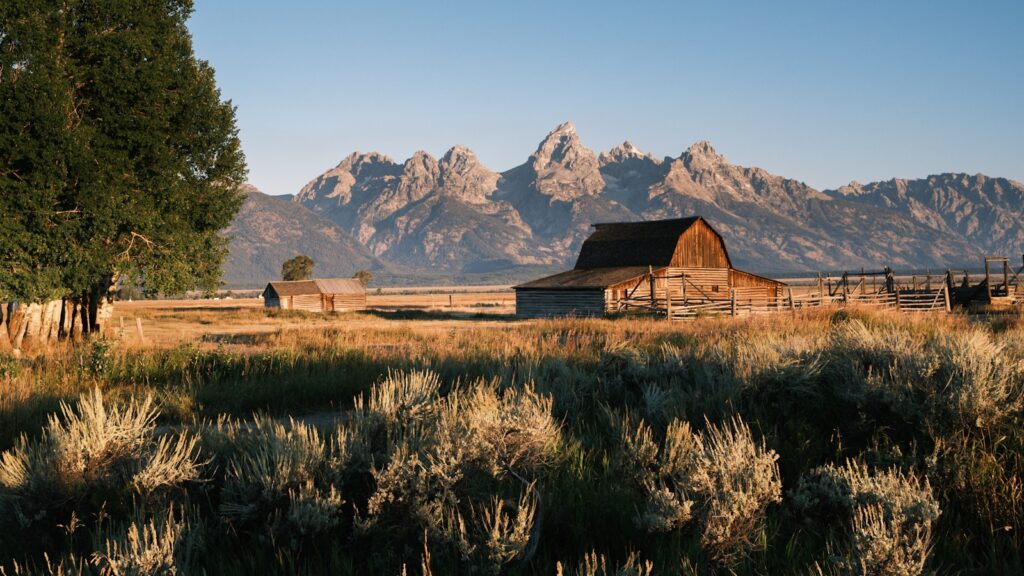
Few mountain ranges in America are as instantly recognizable as the Tetons, and Signal Mountain Campground offers front-row seats to this iconic vista. Located on the shores of Jackson Lake, this campground provides sweeping views of the entire Teton Range, with the jagged peaks reflecting perfectly in the lake’s calm waters during morning and evening hours. The elevation of Signal Mountain creates a perspective that makes the already towering mountains seem even more imposing and majestic. Each of the 81 sites is positioned to maximize privacy while still allowing glimpses of the mountains through the pine forest. Morning fog often settles in the valley below the campground, creating the magical illusion that campers are floating above the clouds with only the Teton peaks for company.
Rocky Mountain National Park’s Moraine Park Campground
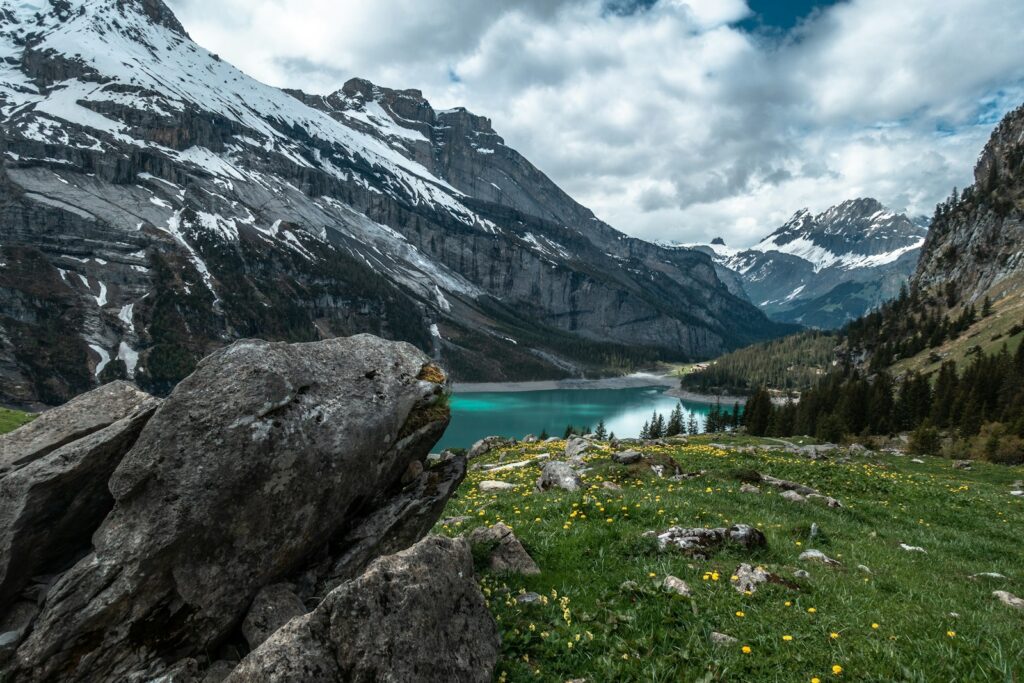
Set in a vast meadow surrounded by mountain peaks, Moraine Park Campground offers perhaps the most expansive mountain views of any national park campground. The surrounding mountains form a 360-degree panorama, with Longs Peak (the park’s highest at 14,259 feet) dominating the skyline to the south. The open meadow setting allows for unobstructed views from nearly every campsite, with many offering direct sightlines to multiple peaks from the comfort of your camping chair. At dawn and dusk, elk frequently graze in the meadow surrounding the campground, creating quintessential Rocky Mountain scenes as they move beneath the towering peaks. The campground’s elevation at 8,160 feet means cooler temperatures even in summer, perfect for enjoying the alpenglow on surrounding mountains from around your evening campfire.
Mount Rainier National Park’s Sunrise Campground
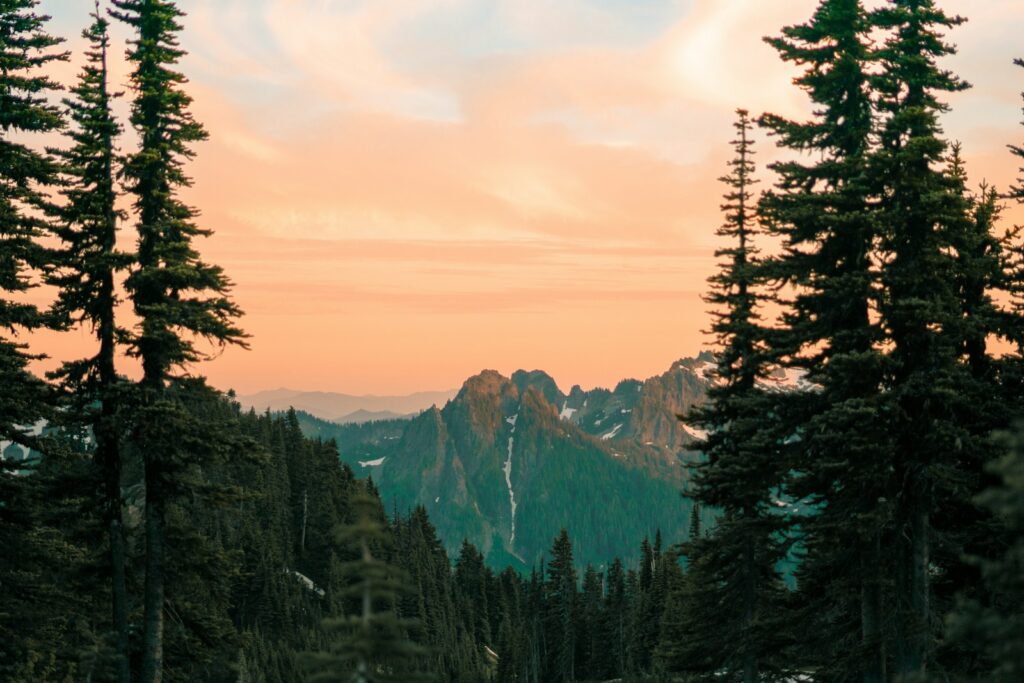
As its name suggests, Sunrise Campground offers some of the most spectacular morning views in the entire national park system. Sitting at 6,400 feet on the northeast side of Mount Rainier, this campground provides intimate views of the massive glacier-covered volcano that seems close enough to touch. The surrounding Cascades create a beautiful backdrop, but it’s the 14,410-foot Rainier that commands attention, especially when morning light strikes its eastern face. The high-elevation setting means campers often find themselves above the cloud layer, watching the sun rise over a sea of clouds with mountain peaks poking through like islands. Wildlife sightings are common here, with mountain goats often visible on nearby ridges and marmots frequently visiting the campground perimeter.
Yosemite National Park’s Tuolumne Meadows Campground
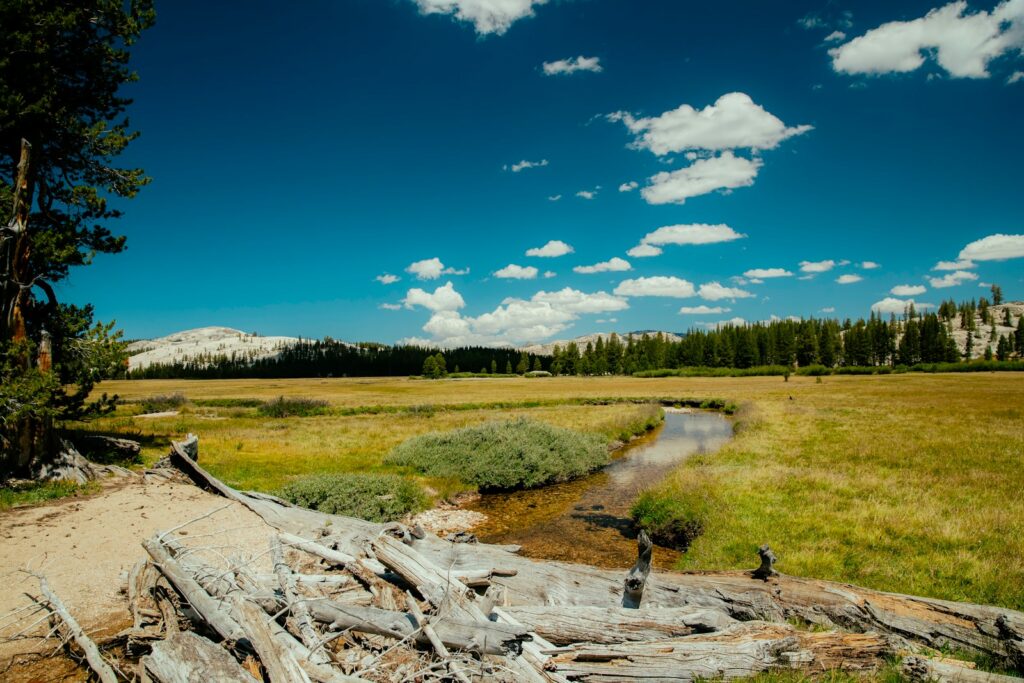
High in Yosemite’s alpine region, Tuolumne Meadows Campground sits at 8,600 feet surrounded by classic Sierra Nevada granite domes and peaks. The campground borders the expansive Tuolumne Meadows, providing open views to Lembert Dome, Unicorn Peak, and Cathedral Peak, all exemplifying the rounded granite formations that make this mountain range distinctive. The Tuolumne River meanders through the meadow, creating reflective pools that mirror the surrounding mountains and add to the visual impact. Unlike Yosemite Valley campgrounds that sit in a deep canyon, Tuolumne’s high elevation and open setting provide panoramic mountain views in all directions. The night skies here are particularly stunning, with minimal light pollution allowing campers to see the Milky Way arching over the mountain panorama.
Great Smoky Mountains National Park’s Mount LeConte Shelter

For those willing to hike for their views, the Mount LeConte Shelter offers perhaps the most immersive mountain experience in the Appalachians. This rustic shelter sits just below the 6,593-foot summit of Mount LeConte, requiring a strenuous hike of at least 5.5 miles (depending on the trail chosen) but rewarding campers with breathtaking views across the ancient, forested ridges of the Smokies. The shelter’s location near Myrtle Point provides what many consider the best sunrise views in the eastern United States, as morning light gradually illuminates the endless blue-hued mountain ridges stretching to the horizon. Unlike most campgrounds, staying here requires advance reservations through the park’s lottery system, with competition fierce for the limited spots available each night. The effort required to reach this campground ensures a special communion with the mountains that drive-in campgrounds simply cannot match.
Olympic National Park’s Deer Park Campground
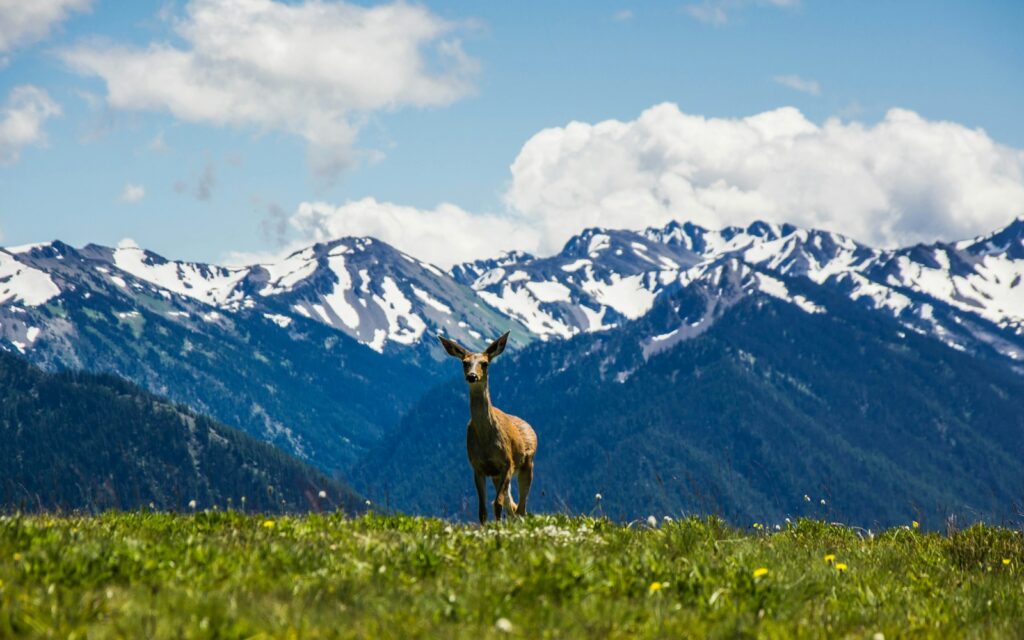
One of the lesser-known gems in the national park system, Deer Park Campground sits at 5,400 feet on Blue Mountain, offering spectacular views of both the Olympic Mountains and the Strait of Juan de Fuca. On clear days, campers enjoy a rare three-country view: the Olympic peaks to the south and west, Canada’s Vancouver Island to the north across the strait, and even Washington’s Cascade Range (including Mount Baker) visible to the east. The campground’s small size (only 14 sites) and remote location at the end of a steep, narrow gravel road ensure it never feels crowded despite its incredible setting. The high elevation means cooler temperatures and often sees the campground sitting above the clouds that frequently blanket the Olympic Peninsula, creating the sensation of camping on a mountain island in a sea of clouds.
Grand Canyon National Park’s Desert View Campground
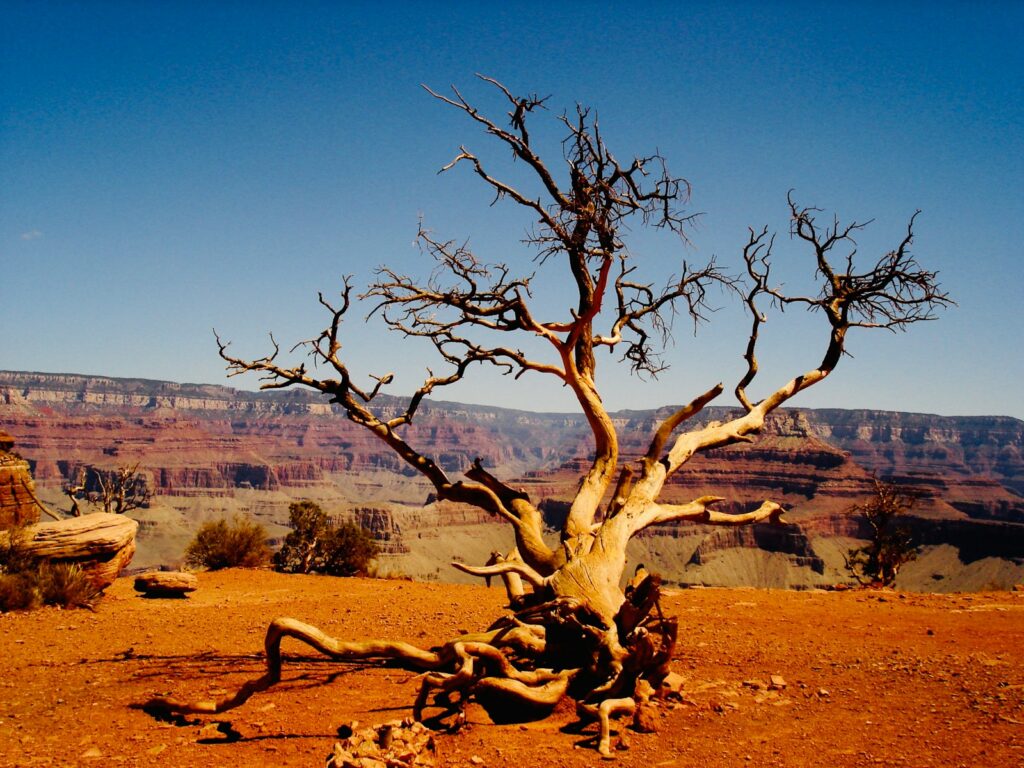
While not technically a mountain view in the traditional sense, Desert View Campground offers campers front-row seats to one of the world’s most dramatic geological spectacles – the Grand Canyon. The campground sits near the canyon’s east entrance, providing views not just of the immense canyon but also of the San Francisco Peaks nearly 80 miles away. The elevated position allows campers to watch storms roll across the vast landscape, often with lightning illuminating distant peaks while their campsite remains dry. Sunset and sunrise here are particularly magical, as the changing light transforms the layered buttes and mesas of the canyon into a kaleidoscope of red, orange, and purple hues. The campground’s relative distance from the busier South Rim Village area means nights are quieter, allowing campers to better appreciate the vastness of the starry sky over this mountain-desert landscape.
North Cascades National Park’s Colonial Creek Campground
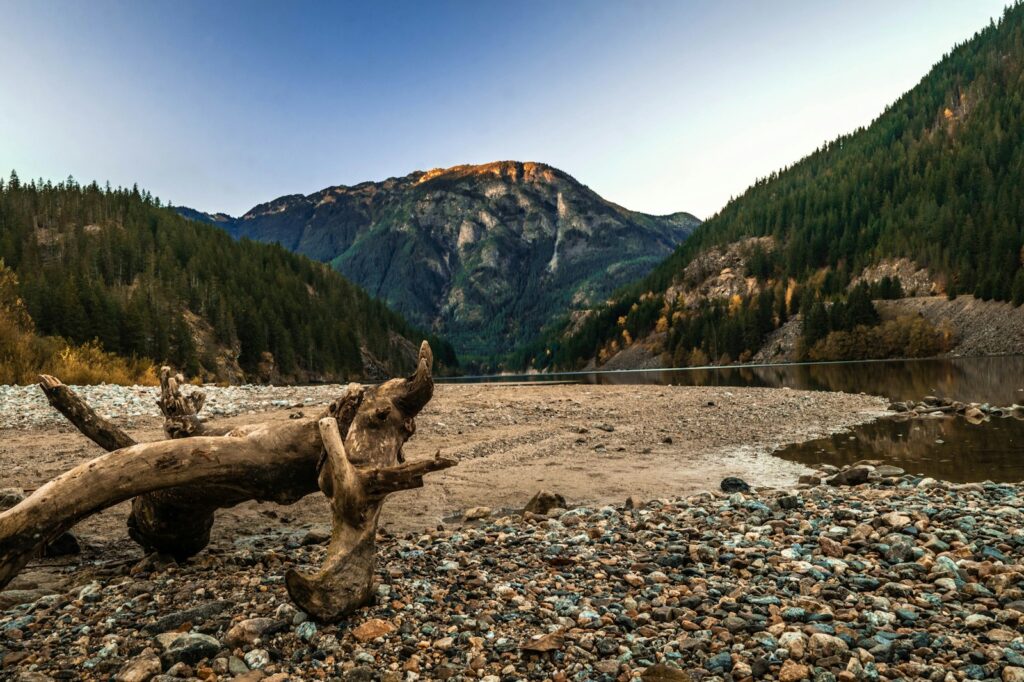
Offering some of the most dramatic mountain views in the Lower 48, Colonial Creek Campground sits on the shores of turquoise Diablo Lake surrounded by the jagged peaks of Washington’s North Cascades. The campground provides direct views of Colonial Peak, Pyramid Peak, and Jack Mountain, whose near-vertical faces rise over 7,000 feet from the lake level. The distinctive turquoise color of the lake, caused by glacial silt, creates a striking contrast with the dark green forests and gray granite peaks. Morning mist often clings to the mountainsides, gradually burning off to reveal the glaciers that cap many of the surrounding peaks. The campground’s location in what’s often called “America’s Alps” is apt – the rugged, steep terrain rivals many European alpine settings while remaining accessibly wild.
Sequoia National Park’s Lodgepole Campground

Nestled among towering sequoia trees at 6,700 feet, Lodgepole Campground offers spectacular views of the Great Western Divide of the Sierra Nevada range. The mountains here rise to over 12,000 feet, creating a dramatic backdrop visible through gaps in the forest canopy. The nearby Marble Fork of the Kaweah River runs alongside the campground, providing not just gorgeous views but also the soothing soundtrack of rushing mountain water. Many sites offer direct views of Castle Rocks and other granite formations that characterize this section of the Sierra Nevada. The campground’s elevation means pleasant temperatures even in summer, while its setting among giant sequoias adds another dimension to the mountain experience – the vertical perspective of these ancient trees reaching toward the same sky as the distant peaks.
Denali National Park’s Wonder Lake Campground
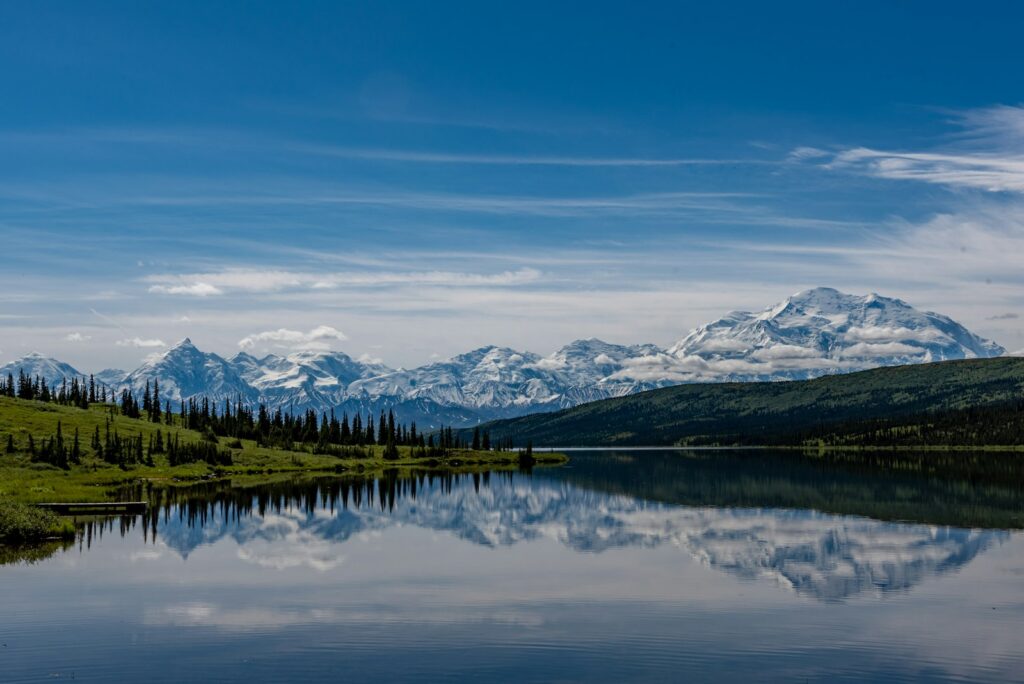
For those seeking the ultimate mountain view, few campgrounds anywhere can compete with Wonder Lake. Located 85 miles into Denali National Park, this remote campground offers the closest and most impressive views of Denali (formerly Mt. McKinley), North America’s tallest peak at 20,310 feet. On clear days (which are admittedly not guaranteed in this notoriously cloudy area), campers witness Denali rising a staggering 18,000 feet from the surrounding landscape – a vertical relief greater than even Mount Everest when viewed from many vantage points. The mountain’s reflection in Wonder Lake on still mornings creates photography opportunities that have graced countless calendars and publications. The campground’s remoteness requires commitment – reaching it means a long bus ride deep into the park – but the reward is a mountain view of unparalleled grandeur and the chance to experience Alaska’s wilderness at its most magnificent.
Zion National Park’s Watchman Campground

Unlike many mountain view campgrounds set high in alpine regions, Watchman Campground lies in the bottom of Zion Canyon, offering a unique perspective as thousand-foot cliffs and peaks rise directly above your tent. The campground’s position provides spectacular views of the Watchman, a 6,545-foot mountain whose red sandstone face catches the last light of day, glowing like fire during sunset. The contrast between the green cottonwood trees along the Virgin River and the towering red rock mountains creates a desert mountain landscape unlike any other in the national park system. Many sites offer unobstructed views straight up canyon walls that seem to touch the sky, creating a sense of being embraced by mountains rather than simply viewing them from afar. The campground’s accessibility and proximity to amenities makes it perfect for families or those new to camping who still want world-class mountain scenery.
America’s national parks offer an unparalleled opportunity to experience mountain landscapes in their most pristine form. From the glacier-carved peaks of Montana to the ancient red rock formations of Utah, these campgrounds provide not just accommodation but a front-row seat to nature’s grandest spectacles. What makes these locations special goes beyond mere scenic beauty – it’s the immersive experience of living temporarily within these landscapes, watching them change with the light and weather, and feeling connected to something vastly older and more permanent than ourselves. Whether you’re seeking the challenge of a backcountry experience or the convenience of a developed campground, these mountain views await, promising memories that will last long after you’ve packed up your tent and returned home.

